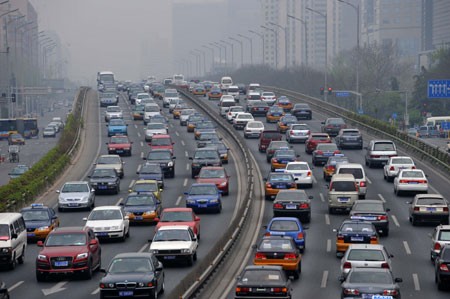Beijing will be phasing out around 1 million vehicles meeting emission standards National Phase I and II (equivalent to Euro I and II standards) to reduce air pollutants, Beijing Environmental Protection Bureau (BEPB) deputy chief Fang Li said.
The methods for and date of the phase-out have not been decided yet, according to the official.
Under Beijing's Five-Year Clean Air Action Plan (2013-2017), one of the target measures set is the phasing out of 1 million old vehicles by 2014 and 2015.
Vehicles with "yellow label," cars which do not meet the Euro I standard, will be forbidden within the 6th ring road by 2014. By 2015, they will be entirely phased out and taken out of service.
The current phase-out policy stipulates a scrape-down after 15 years for cars, 10 years for buses, and 8 years for taxis.
However, the Clean Air Action Plan aims to fast-track the phasing out of old and high-emission vehicles and encourage owners to replace them with new and environmental-friendly alternatives.
The implementation of this part of the Plan has been assigned to the Beijing Traffic Management Bureau (BTMB), the BEPB and the local districts.
There are currently 5.5 million vehicles in Beijing, of which less than 20 percent are in the lowest emission categories. Under the Beijing Clean Air Action Plan, the BEPB and BMCT are assigned the task of ensuring that the Euro V vehicle emission standard will become mandatory for new diesel vehicles by the end of 2014, and the Euro VI vehicle emission standard implemented from 2016 onward.
Fang said that during the Nov. 3-12 period, the amount of nitrogen oxides generated by vehicle exhaust was 44 percent less than the same period last year.
To ensure clean, pollution-free air during the APEC meeting, Beijing had to set in place a host of rather tough, less-than-regular measures, including restricting the use of private cars based on their license plates, keeping 70 percent of public vehicles for governments and institutions off the road, banning work trucks, and even stopping work at construction sites and suspending production at certain factories.



























